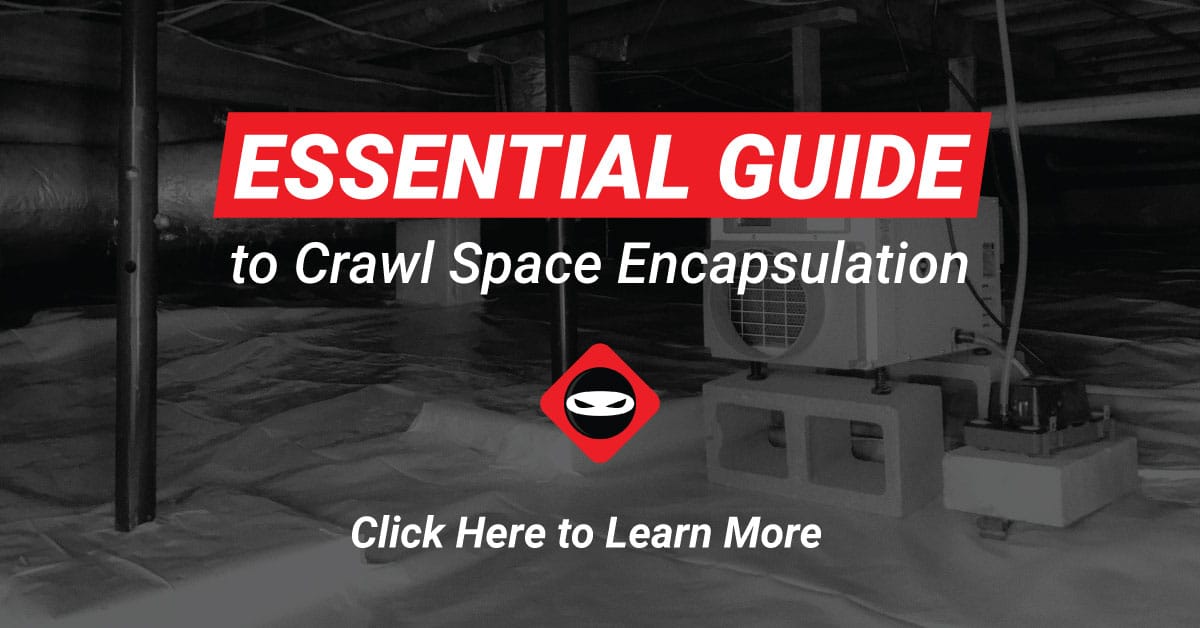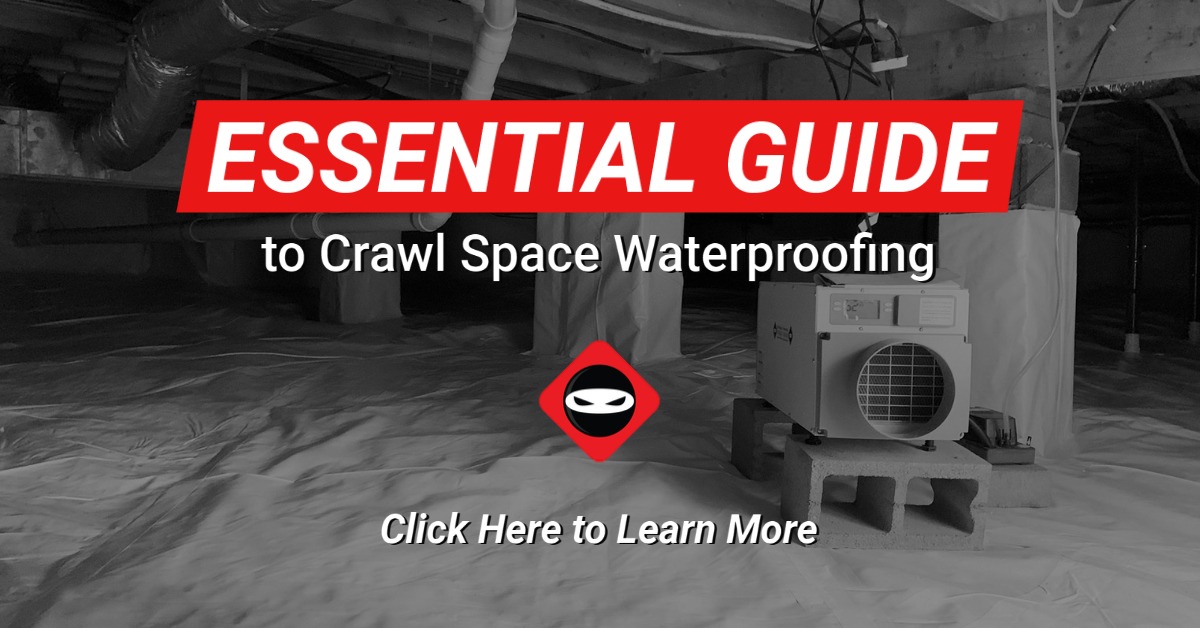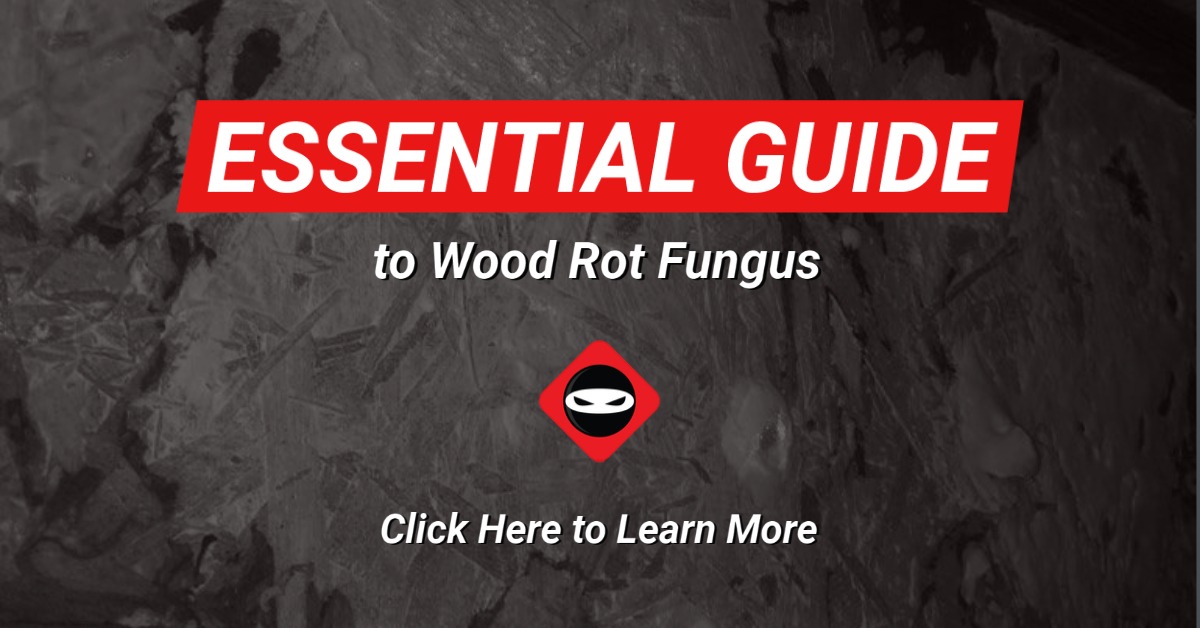How do you effectively lower humidity in your crawl space to prevent mold and wood rot fungus? There are many ways to lower humidity in the crawl space and the #1 solution will be to add a properly sized dehumidifier but there is more.
Crawl Space Vapor Barrier and Humidity
If you own a home with a crawl space, you likely have a loose-laid vapor barrier installed in the crawl space. This is a good line of defense for high humidity, but many of the loose-laid vapor barriers shift and become less effective over time.
Installing a vapor barrier on the ground, walls, and pillars of the crawl space is a better way to slow the evaporation process. The ground in the crawl space will constantly give off humidity, even during a drought in some cases. Overlapping and sealing the vapor barrier at the joints is also needed to reduce the amount of humidity getting into the crawl space.

Doors Help Control Humidity When Sealed
If you own a crawl space with a decorative door that has gaps in it, this will allow the outside humid air to enter your crawl space. Sure, it probably looks great, but chances are it is affecting your humidity.
You should properly insulate the material used for the crawl space door to help with energy efficiency. We use a marine grade 3/4 inch thick waterproof door material and many times have to custom fit the door to the opening. This involves insulating the door and air sealing the door framing to keep humidity out.

Seal Crawl Space Vents
This should go without saying but you must air seal and insulate crawl space vents to stop excess humidity from entering the crawl space. We have seen everything from pillows to blue jeans to cardboard boxes to loose foamboard installed in the crawl space vents to seal them. Air sealing and insulating the vents are essential to controlling humidity as you can see in the video below.
Pro tip: it may be counterproductive to seal vents without a dehumidifier installed in the crawl space.
Crawl Space Dehumidifier Lowers Humidity
There are still other steps to lowering humidity based on your situation but the crawl space dehumidifier is the most important piece of the puzzle. By installing a proper vapor barrier and sealing doors and vents, it allows the dehumidifier to do its job more effectively. This will save you money in the long run because the crawl space dehumidifier is able to reach optimal humidity levels quicker. If you choose to ignore the above information, your power bill will increase while the dehumidifier efficiency will decrease.
Other Problems to Fix to Lower Humidity
If your crawl space is flooding or you have a plumbing leak, fixing these items should be part of the controlling humidity process. The crawl space dehumidifier will have to fight standing water or wood that is constantly wet and could lose the battle if the water is too much for it to handle. The Ninja Crawl Space Encapsulation System looks at the entire crawl space from the top down to identify all the moisture problems and correct them.
Ready to find out more?
Drop us a line today for a quote!
Click Here
Get in Touch With us
Contact us if you need help fixing your crawl space, basement, or yard drainage by clicking here.
Do you need help with crawl space encapsulation in Alabama, Georgia, Delaware, North Carolina, Tennessee, Kentucky, or South Carolina? If so, please contact us to schedule your assessment. Also, let us know in the comments below if you’d like to suggest a future blog post.
Perhaps you’d like to tackle your own crawl space repair. Visit our DIY Store.
Learn about Crawl Space Ninja Franchise opportunities.


4 thoughts on “How Do I Lower Humidity in My Crawl Space”
Our cr/spc is incap’ed and a dehum. Installed. Recently our humidity level Increased from 50 to 65. No changes in cr/spc. conditions to explain. Would a larger dehumidifier solve problem?
Larger dehumidifier could help. Also, is the door and all vents sealed well?
Hi Michael I have watched many of your videos trying to help with solving our Crawl space humidity and mold problem but could really use some more specific advice. We live in East Texas and outdoor humidity is quite bad in the summer. We have high humidity in our crawl space which has caused mold growth on our joists and on the insulation we had in there. We had the insulation pulled out and addressed a ground water leak coming into the space. We then had a vapor barrier installed over our dirt floor. The company we hired sprayed for the mold but it is back and our vapor barrier is full of condensation. Not sure what to do first. Try to get the mold remediated first or close off the vents and doors and put in a dehumidifier to address the condensation and humid air coming in from outside. I have two fans in the crawl space right now and the doors open. I’m pretty sure it is making this situation worse. Any advice you have would be greatly appreciated. Thanks, Mary Graham
Hi Mary, so sorry they did that to you. I would install a dehumidifier and control humidity 1st. You want it kept below 60% and the wood to dry below 20% before addressing the mold. If the wood and air are wet, the mold could return. The fans and doors are likely bringing in hot humid air and as you suspect, making it worse. Hope that helps.